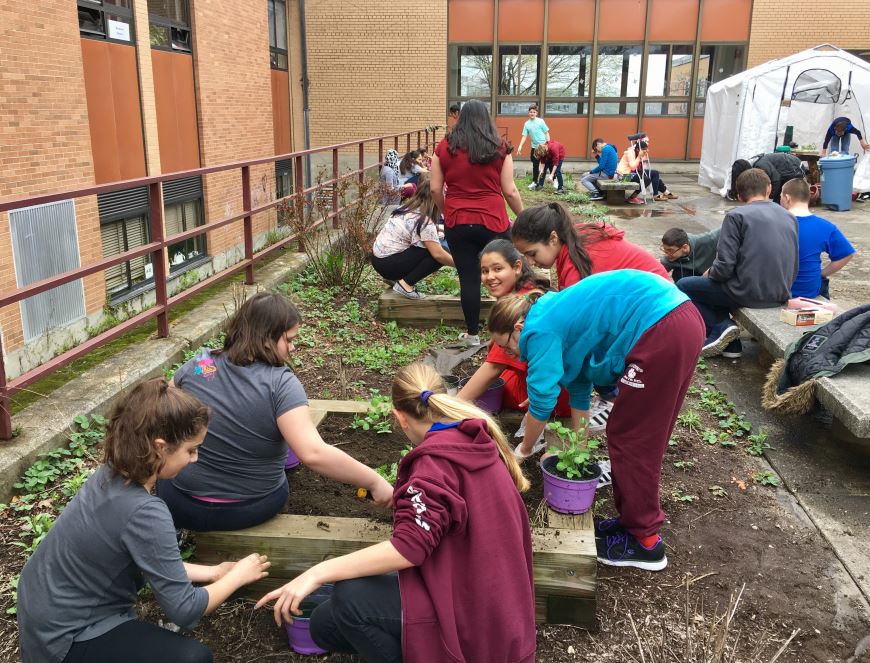
For the past three years, students and teachers at Broadview Middle School have dedicated two areas around the school to gardens that grow native plants and vegetables and encourage good environmental practice for the community.
Last week, Broadview was chosen as one of two schools in Connecticut for this year’s Audubon Society Schoolyard Habitat Program and was awarded a grant for $3,000. Westside Middle School Academy earned this recognition last year for its outdoor classroom.
According to its website, the Audubon Connecticut’s Schoolyard Habitat Program is a partnership with the U.S. Fish & Wildlife Service that develops healthy schoolyard habitats for children and wildlife, integrates place-based environmental education into the school curriculum, and promotes the environmentally friendly practice.
Broadview science teacher Dallas Moore said the school was selected because it took the initiative to establish the gardens as a grassroots effort without any resources. The raised beds were built by students from the Alternative Center for Excellence under the guidance of teacher John Webber. Moore said another reason Broadview was selected was its proximity to the local hospital, which attracts migratory birds with its lighting.
Broadview has two garden areas: a Peace Garden in the front of the school that is home to native species and 13 raised beds on the side of the school that are used to grow herbs and vegetables, such as cucumbers and peppers.
Moore and reading teacher Sue Mills led the project with help from school social worker Christine Miller and ESL teacher Val Anderson.
Moore said that the gardens serve as part of the curriculum two ways. Students involved in the school’s Roots & Shoots afterschool program, which currently meets twice a month and has 40 members in sixth through eighth grade, participate in caring for the gardens. Also, the entire sixth grade has used the gardens to learn ecology, starting with a nature walk as a unit introduction.
Although freezing temperatures have put an end to this year’s crops, Moore and the other teachers will meet decide how to spend the grant and map out a plan for spring.